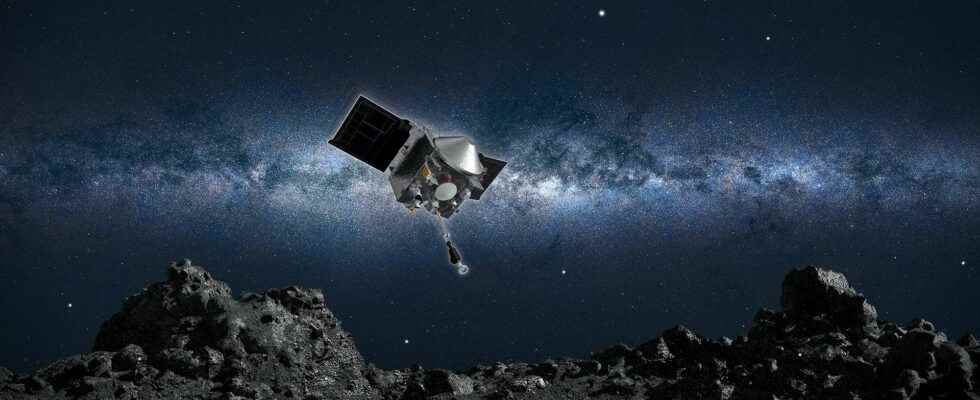Apophis, which will pass just 32,000 kilometers from Earth in April 2029 — Friday the 13th to be precise — will be visited by a space probe. NASA has decided to extend the Osiris-Rex mission and divert it to Apophis as soon as it delivers the Bennu samples that it brings back to Earth. For 18 months, she will closely study this asteroid which was perceived, for a time, as a threat to the Earth.
Osiris-Rex is one of eight assignments that the Nasa decided to extend. This mission is in flight to Earth to bring back samples from the surface of the asteroid Bennu which it recovered in October 2020 and which should be delivered to Earth in September 2023. After that, it will head towards the asteroid Apophis which it would reach in 2029, shortly after passing just 32,000 kilometers from Earth on April 13, 2029. The probe, which will be renamed Osiris-Apex for Apophis-Explorer, will not orbit Apophis but will fly nearby for about 18 months. This will be the first opportunity to study an S-type asteroid so closely.
L’Apophis asteroidwhich measures about 350 meters in diameter, has regularly made headlines since its discovery in 2004, because of the low risks – but not zero then, finally dismissed – of collision with the Earth in due course. distant.
Note that, while the latest trajectory calculations have ruled out a risk of collision over the next 100 years, the ” latest radar observations of Apophis indicated it could be an asteroid binary in contact, i.e. consisting of two rocky lobes linked by gravity, which could produce interesting effects, but without risk, during its passage near the Earth “, explains Patrick Michel, research director at the CNRS at the Observatory of the Côte d’Azur, principal investigator of the mission Hera of the’ESA and co-investigator of numerous international missions. Apophis is therefore a wonderful natural laboratory to observe and understand the tidal effects on an object passing closest to the Earth “.
An unprecedented maneuver to sweep the surface of Apophis
Osiris-Apex will not be able to collect samples from Apophis but will use its thrusters close to the surface to clear away a bit of what’s on the surface and see what’s just below. To understand the great scientific interest of this maneuver, it should be known that in general, it is difficult to determine the exact composition of asteroids from spectral images, because the spectral signatures are similar and, moreover, certain elements are volatile. and were able to escape into space.
The elements visible on the surface therefore do not always correspond to those below and it is therefore worth digging and taking a sample or, in the case of the mission in question, firing the thrusters near the surface for the to sweep up.
Technically, the mission is not without risk wishes to underline NASA. The trajectory that the probe will take to reach Apophis will bring it within half an astronomical unit of the Sun. As a reminder, one AU corresponds to approximately 150 million kilometers, i.e. the distance which separates the Earth from the Sun. However, the probe was not designed to fly “that close” to the Sun, so that it will be necessary to monitor the general state of the probe and its payloads and scientific loads almost constantly.
Interested in what you just read?
